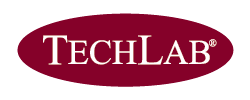Advantages of the QUIK CHEK™ device upflow technology vs lateral flow
Filters the sample
The QUIK CHEK™ device upflow technology utilizes porous pads and porous membranes to filter the insoluble material typically present in fecal samples to avoid clogging. Lateral flow devices rely on uniform sample flow for proper test performance, and the membranes can clog easily, resulting in inconsistent sample flow and test failure.
Washes the membrane
The QUIK CHEK™ device upflow technology also includes a wash step to remove any unbound material away from the test line, increasing clarity and reducing background noise.
Amplifies the signal
Finally, the QUIK CHEK™ device upflow technology uses antibody-peroxidase conjugates to enzymatically amplify the signal strength, for quick and confident interpretation of results. In lateral flow devices, antibody particles, either gold or latex, offer no possibility for enzymatic signal amplification.
Accuracy matters. A patient’s health may depend on it. Even with complex fecal samples, the clean background and clear signal of the QUIK CHEK™ device upflow technology provide fast, reliable results.
